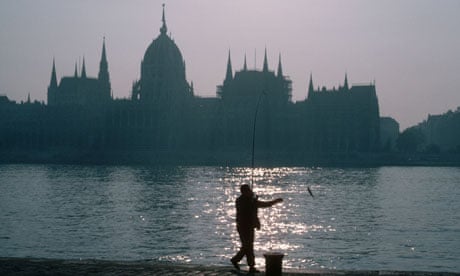A few years ago a friend sent me three very large paperback novels – a trilogy about Hungary before the first world war – which he said I should read.
The Writing on the Wall, as the books are known (better than "the Transylvanian Trilogy", the inadequate English alternative), did not look promising. Their covers were relatively austere and their author was a dead Hungarian aristocrat of whom I then knew nothing. They sat ignored until, by chance, I took the first of them to Spain one summer and, having nothing else to read, opened it.
Since then their author, Miklós Bánffy, has never been far from my mind. The elegiac wisdom of his writing makes him one of those people whose life you wish could have ended in something other than calamity. His three great novels, which are really one and should be read as such, are significant and addictive works. Word of their excellence is spread largely by private recommendation. I know no one who, having begun them, has not charged through to the end.
The three books – They Were Counted, They Were Found Wanting and They Were Divided – are at one level a sort of Austro-Hungarian Trollope, with sleigh rides in place of fox hunts and the Budapest parliament instead of the House of Commons. So far, so dull, you might think – except that Bánffy was a great storyteller (his factual account, in his book The Phoenix Land, of the 1916 coronation of the last Hungarian monarch is spellbinding), and wrote as a member of a class and the citizen of a country that had both been brought to ruin.
Bánffy published his books in Hungarian between 1934 and 1940. By then, the pre-first world war aristocratic tradition he describes was dead; or at least the political part of it, for the trappings lingered on – not least at Bánffy's own great family castle of Bonchida, by then in Romania and destined to be partly destroyed by the Germans in 1944.
Bánffy died in 1950, his papers burned, his books out of print. One of the connected delights of this trilogy is that his daughter was one of the joint translators, and Bonchida (thinly disguised as Denestornya in the novels) is being brought back from a roofless ruin.
That will not return to us the Hungary of which it was once a part, and only a third of which remained in Hungarian hands after the 1920 Treaty of Trianon (an ill-deserved robbery). As Bánffy describes, some of this disaster was his fellow citizens' fault – the product of their incestuous politics, their semi-subservience to the emperor in Vienna, and above all the closed nature of Hungarian society, which did not know how to deal with the continent beyond its borders. That remains true today: there is something mysterious about Hungary, and not only because of its isolated language.
If I have made these sound sour books, or purely political ones, then I have misled you. More than anything, they are human, and beautiful, and descriptive, and rooted in a land and its natural environment that are both gone forever and less far away than we might think. "The radiant afternoon sunlight of early September was so brilliant that it still seemed like summer," the trilogy begins. This summer I urge you to read on ...

Comments (…)
Sign in or create your Guardian account to join the discussion